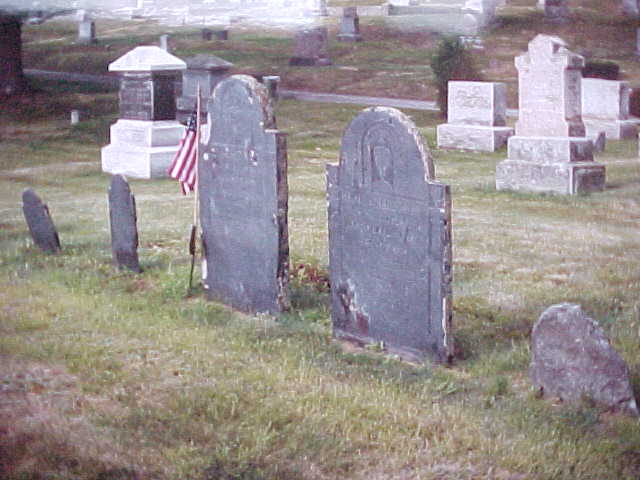ANNA STICKNEY LOVEJOY
To us, our ancestors were visionaries. We regard them as far-sighted and committed. More than likely, however, those ancestors thought of themselves as just everyday, homespun people with a dream or two of exploration and adventure.
Our Anna was the eighth child of Colonel Jeremiah and Elizabeth Stickney’s twelve children. She was born on September 3, 1741, in Rumford (now Concord), New Hampshire. At the age of eighteen, she married Abiel Lovejoy of the same town. He was the son of Captain Henry and Phoebe Lovejoy. Abiel was born in Andover, Massachusetts, on July 25, 1737, and he later lived in Rumford.
Captain Henry Lovejoy had fought in the French and Indian War. He had been paid for his services in the form of a land grant in the new territory of what is now known as North Conway, New Hampshire. In the early 1770s, Henry gifted his son, Abiel, with the land for the purpose of seeing his son settle on it.
At that time, it was the custom of the early settlers for the husband to travel alone to the grant, with the purpose of preparing the land for farming and for building a dwelling for housing his family. When Abiel Lovejoy felt that his land on what is now the West Side Road in North Conway was ready, he prepared his family to move to their new homestead.
Soon, around 1771, Abiel led northward his wife, Anna, and their four children, aged from ten years to just a few months. One can only speculate what the journey from Concord to Conway would have been like, with four small children. The journey may have been undertaken on horseback, with packhorses to carry the necessities to set up housekeeping for a growing family about to begin life anew in a picturesque wilderness, with an unforgiving climate.
It might also have included oxen. Depending on the season, it might have included a canoe or two, which would have been paddled up the Merrimack River, which was available to them for a good distance in their journey.
Perhaps the trip was made during the winter months, and they traveled on snowshoes. The journey, no matter how it was made, could not have been completed in less than two weeks’ time. These days, with modern highways and fast moving automobiles, the accomplishment takes less than two hours!
In Barbara Smart Lucy’s History of Conway, New Hampshire, published in 1963, one reads:
“During the first years, the settlers came every summer to fall to clear and plant some land. They also would build log cabins. Then they would go back to their old homes, and during the winter, they would move their families. They often found their cabins buried in snow and had to dig holes to find the doors. When the snow was deep and hard, it was easier to travel on snowshoes. It was also easier to pull a sled loaded with the food and the few things needed to start a home. Often 400 pounds of supplies would be brought this way.
“A horse for riding and work, and a cow for milk, walked with them. The men always carried muskets and axes and packed heavy loads on their backs.”
It is well recorded that Abiel was an original owner of land in Conway, having received the grant of his father, Captain Henry Lovejoy. He is listed in the histories of this town as having been a selectman and he was installed as a deacon of the First Church of Conway (Congregational) on July 26, 1774.
Abiel Lovejoy served in the Revolution and is a proven DAR patriot from the state of New Hampshire, having given patriotic service. In a DAR pamphlet found at the Conway Library, he is reported to have been a corporal at Winter Hill.
We can assume that Anna’s role as a wife and mother in a newly developing land was one of industry and intense struggle. She, more than likely, was the sort of woman would attend others in their time of need, no matter the trouble it took for her to do so. She was probably taught, as a child, to honor the Scriptures. This, she must have done throughout her lifetime. We can be fairly certain that her character was established on the principles of God, Home, and Country.
Together with her husband, Abiel, they were successful, through perseverance, hard work, and frugality, in carving out a life of dignity and recognition in a new wilderness. Theirs was the making of generations of descendants, still living, over two centuries later, in the area that they helped to settle.
Beside her husband, Anna Lovejoy stood as a deacon’s wife. Behind him, she stood as a caretaker and helper in his daily toils, and she was a nurturer and a source of strength to her seven children.
Anna Stickney Lovejoy was not a grand lady who left the world any specific hallmark of her life. She was, however, one of the many women of this country’s early past whose courage and fortitude made our country able to grow and prosper, building the very cornerstone of our heritage.
Anna died in North Conway on January 14, 1815, prior to her husband, Abiel, who died two years later, also in North Conway, on May 27, 1817.
They are interred side by side in the North Conway Cemetery.

Children of Abiel and Anna (Stickney) Lovejoy as recorded on the 11th day of March, 1799, by Richard Eastman, Town Clerk of Conway, NH.
| Henry | 17 April 1761 | Concord, NH |
| Jerimah | 23 May 1763 | Concord, NH
|
| Abiel | 10 August 1767 | Concord, NH |
| William | 10 March 1771 | Concord, NH |
| Phebe | 26 July 1774
| Conway, NH |
| Elisabeth | 22 January 1776
| Conway, NH |
| Anna | 16 April 1785 | Conway, NH |


